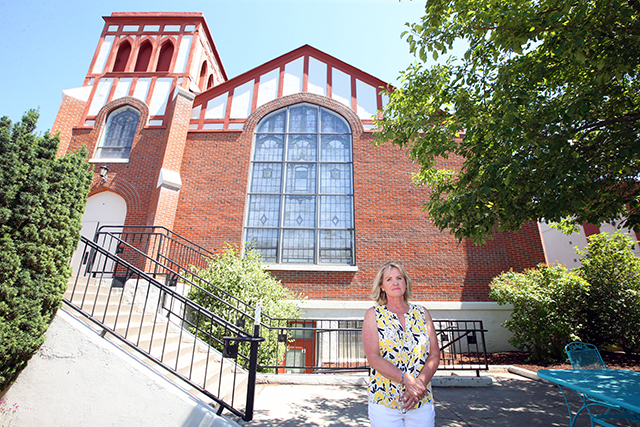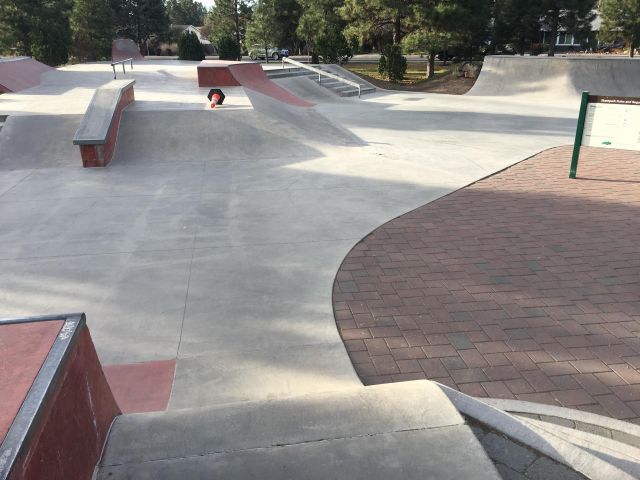Smart Glass
Published 12:00 am Saturday, October 4, 2014

- Sunset over water
When officials at Central Oregon Community College were designing and building a new Redmond Technology Education Center, they were interested in including the latest energy-saving products.
While researching building materials, the architects in charge of design, Bend-based BBT Architects, stumbled across SageGlass, or electrochromic glass with the ability to tint according to the building’s needs.
Trending
“We became aware of the product through an advertising email that came across Kevin’s (Shaver) desk,” explained Al Levage, senior associate of BBT Architects. “He did a little research on the product, and eventually, Del Bankston of SageGlass came down and did a presentation for us.”
The “smart glass” utilizes a glazing technology that controls the amount of sunlight passing through the window, thus reducing energy consumption. Essentially, it allows in more light and heat during colder months, and less light and heat during the warmer months.
The smart glass was installed on most of the windows on the east, south and west sides of the building. There are sensors on the building monitoring the sun’s activity and relaying the information to a control panel.
In instances where less light is desired, such as during presentations, there are also manual controls in the room to manage the amount of light coming through the windows. It usually takes five to seven minutes for the glass to tint, longer if it is cold outside.
SageGlass, manufactured by SAGE Electrochromics Inc., is fabricated into industry standard insulating glass units to be able to fit into a wide range of windows and skylights.
“The biggest challenge was working with the manufacturing, delivery and installation scheduling,” said Mike Taylor, project manager for Kirby Nagelhout Construction Company and the builders of the new COCC building. “The glass itself doesn’t differ from regular glass.”
Trending
While scheduling, and a little extra work for the electricians, may add to the project’s planning and initial costs when installing electrochromic windows, the benefits ultimately outweigh those considerations. When taking into account the elimination of the need for shades and larger HVAC systems, as well as the decrease in energy usage and peak demand charges, the cost of electrochromic windows over time works out to be the same or lower than traditional glass windows.
“It has the ability to control solar heat gain and light rendering, such as glare, while at the same time maintaining your view and connection to the outdoors,” explained Bankston, Western Regional Sales Manager of SAGE Electrochromics. “In addition, the glass is dynamic and activates according to the external environment. But, it’s not passive, so you actually have control over it.”
The Lawrence Berkeley National Laboratory estimates that dynamic glass reduces the peak load of heating and cooling systems up to 30 percent, reduces the building’s lighting needs by up to 50 percent.
The glass allows architects to design buildings with more glass without having to consider additional sun-control products, such as interior blinds and exterior overhangs. The increase in window-to-wall ratios helps the designers create aesthetically pleasing structures while still maintaining the project’s buildability.
When the glass is in its tinted state, it blocks 98 percent of the solar radiation that causes fading to carpets, wall coverings and furniture. All of the benefits are achieved without creating a visual barrier between the building’s occupants and the outside environment.
The new Redmond Technology Education Center is located on the corner of Veterans Way and Salmon Drive, across from the Redmond Airport. As of this fall, the 34,000 square-foot building houses the Center for Entrepreneurial Excellence and Development and programs for Automotive Technology in Electronics and Diagnostics and nondestructive testing and nondestructive inspections.
Kirby Nagelhout Construction began work on the $12.5 million project in April of 2013 and finished in July of this year.
Certified Earth Advantage, the technology center also features a heat recovery system in the HVAC, in which air is taken out of exhausted air and added to incoming air as an energy-saving mechanism. They are also planning on adding a solar photovoltaic system in the future.
The Redmond project has created a buzz for the technology in typically sunny Central Oregon. SageGlass is currently in negotiations for other local projects. In addition, Bankston will speak on the technology at the Northwest Green Building Industry Summit in Bend this October.
“Just as there are industry standards regulating typical windows, I believe this technology will be the industry standard in 10 years,” said Bankston.
SAGE Electrochromics, based out of Faribault, Minn., is a subsidiary of the international conglomerate, Saint-Gobain. The 25-year-old company has been selling and installing SageGlass internationally for the past 11 years. While their focus is mainly commercial applications, they are beginning to break into the high-end residential market as well.








